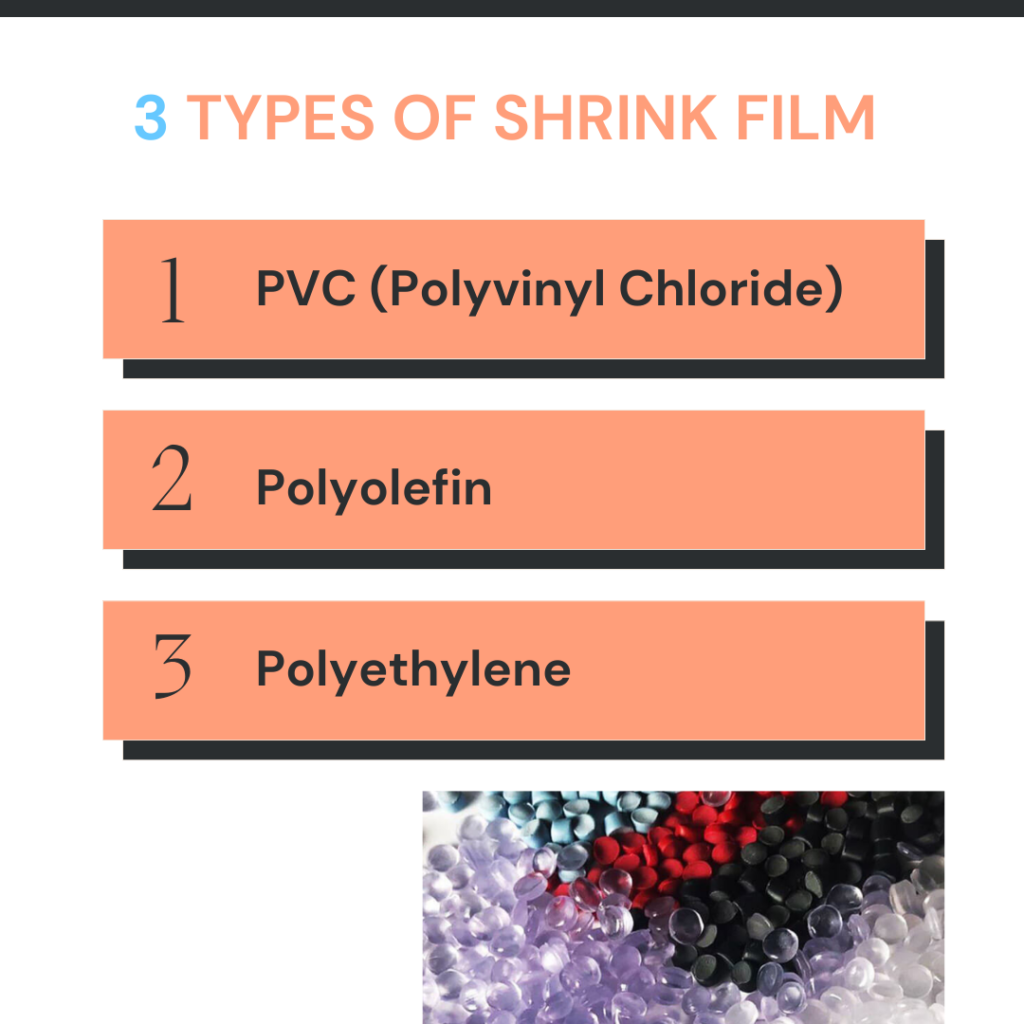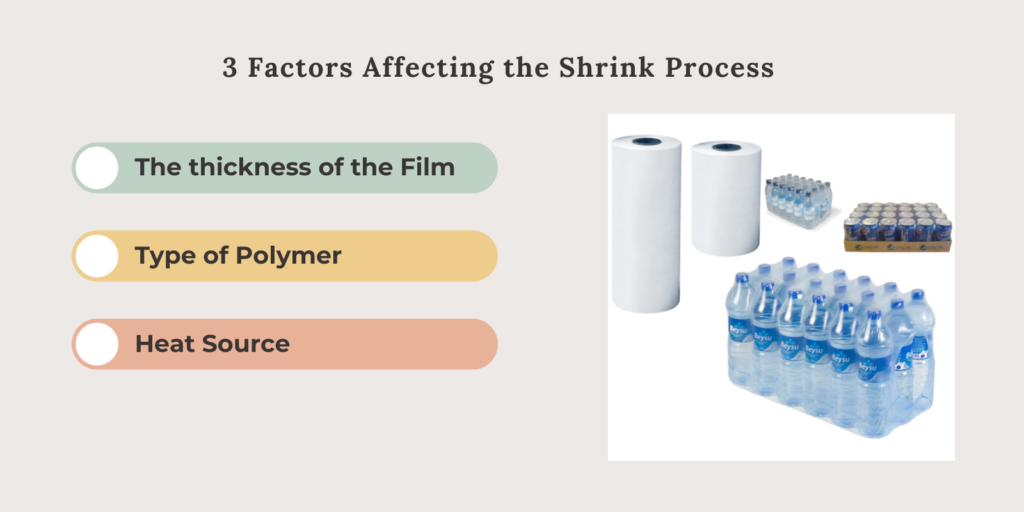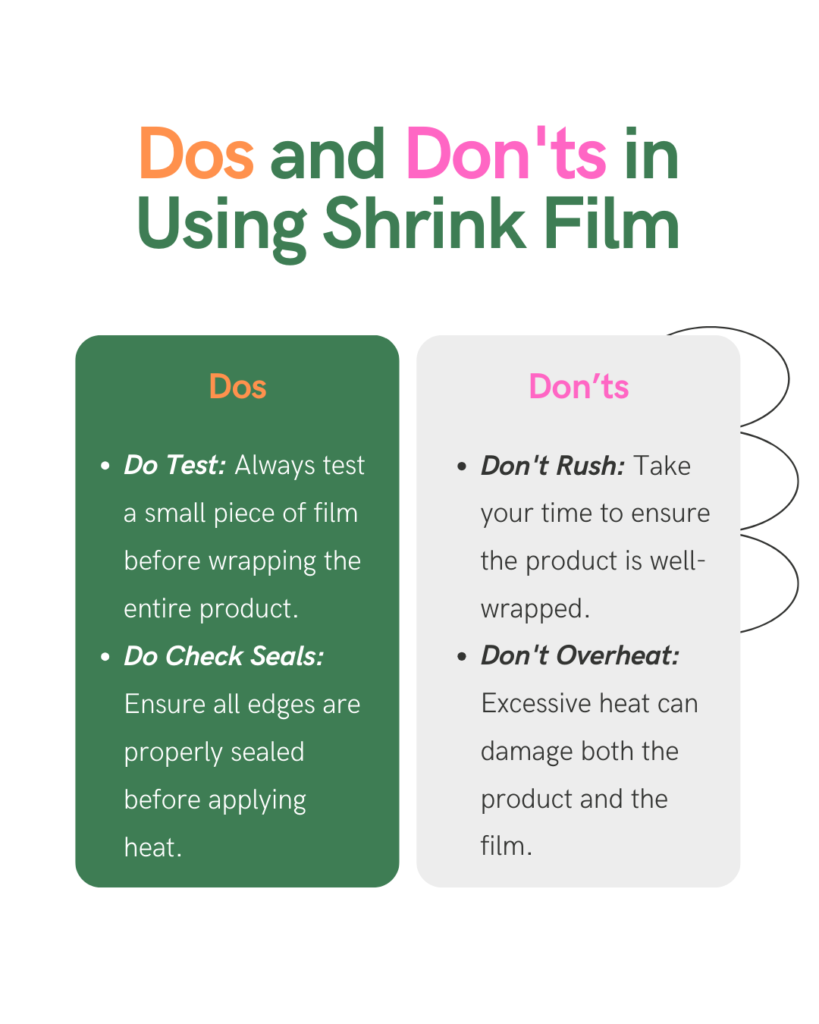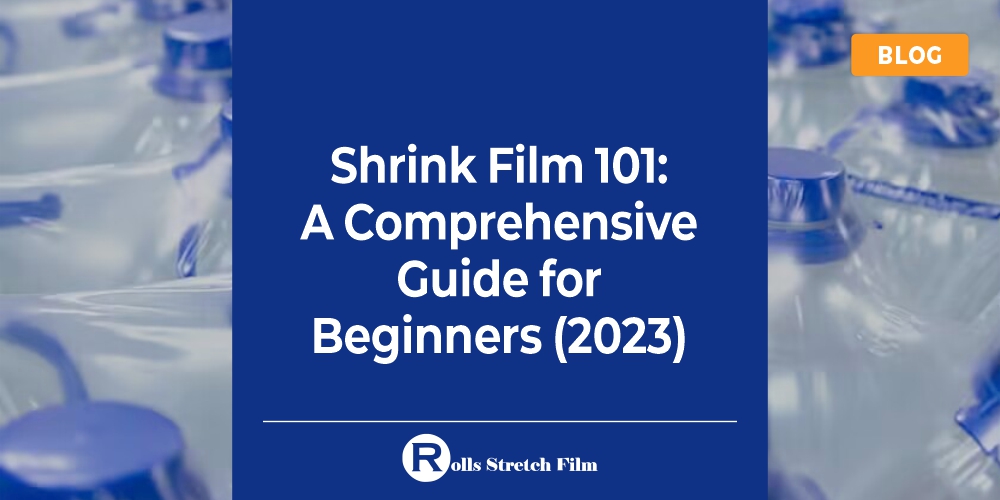Have you ever struggled with packaging goods for shipment or storage, only to find that the material you’re using isn’t entirely up to the task? Perhaps you’ve experienced damaged goods or faced difficulty bundling items. Shrink film can be the answer to these common packaging woes.
Shrink film is a versatile and efficient material designed to wrap around products, providing both protection and stability tightly. It’s the go-to solution for businesses and individuals who require reliable packaging. By the end of this comprehensive guide, you’ll be well-versed in the basics of shrink film, its applications, and how to make the most out of it for your packaging needs. So, let’s dive in and unravel the world of shrink film, shall we?
Understanding Shrink Films

Shrink film is a polymer-based material that contracts when exposed to heat, tightly wrapping itself around the object it covers. The most common types of polymers used in shrink film are polyethylene, polypropylene, and polyvinyl chloride. These materials are chosen for their ability to shrink uniformly and maintain a strong, puncture-resistant seal. Having worked in the packaging industry for years, I can attest to the durability and reliability of shrink film in various applications.
History and Development of Shrink Film
The concept of shrink film dates back to the mid-20th century, when manufacturers were seeking more efficient ways to package goods. Initially, technology was rudimentary, but with advancements in polymer science, today’s shrink films are more versatile and effective than ever. I’ve seen the evolution of this material firsthand, and it’s fascinating how it has adapted to meet the ever-changing demands of the packaging world.
3 Types of Shrink Film
There are several types of shrink film, each with its unique properties and applications:
- PVC (Polyvinyl Chloride): Commonly used for non-food items due to its rigidity and strength.
- Polyolefin: Ideal for food packaging, as it is flexible and FDA-approved for direct food contact.
- Polyethylene: Often used for bundling multiple products together, like water bottles.

Understanding the different types of shrink film is crucial for selecting the right material for your specific needs.
Basic Principles and Science Behind Shrink Film
The science behind shrink film is quite fascinating. When the film is manufactured, it is stretched in both horizontal and vertical directions, a process known as biaxial orientation. This stretching aligns the polymer chains, but they are eager to return to their original state. When heat is applied, the tension is released, causing the film to shrink. This is the principle that allows shrink film to provide a tight, secure wrap around products.
Benefits and Applications of Shrink Film
Major Benefits of Shrink Films
- Versatility: Suitable for packaging a broad spectrum of products, from small consumer items to large industrial machinery.
- Durability: Offers robust protection against wear and tear.
- Environmental Protection: Shields products from moisture, dust, and other external factors.
- Reduction in Damage Rates: When used in shipping, it can significantly decrease the chances of product damage.
- Cost-Efficiency: By reducing damage rates, businesses can save considerable amounts in replacement and customer service costs.

Industries Where Shrink Film is Commonly Used
Shrink film has found its way into numerous industries, each with its unique set of requirements. Some of the most common sectors include:
- Food and Beverage: For sealing and preserving perishable items.
- Pharmaceuticals: For tamper-evident packaging.
- Retail: For product bundling and shelf display.
- Electronics: For protecting sensitive components.
Over the years, I’ve worked with professionals from these industries, helping them optimize their packaging processes with the right type of shrink film.
Uses of Shrink Films in Packaging
Shrink film is not a one-size-fits-all solution; its application can be quite specialized. For example:
- Multi-packs: Bundling multiple items together for retail sale.
- Tamper Evident Bands: Providing a visible sign if a product has been tampered with.
- Pallet Wrapping: Securing large loads for transport.
I’ve been involved in projects that required unique packaging solutions, and shrink film has often been the answer due to its adaptability and range of specialized applications.
Environmental Impact and Sustainability of Shrink Film
Sustainability is a growing concern, and it’s essential to consider the environmental impact of packaging materials. Some types of shrink film are recyclable, and ongoing research aims to make them more eco-friendly. I’ve been part of initiatives that focus on reducing the environmental footprint of packaging materials, and it’s encouraging to see the industry moving in a more sustainable direction.
How Shrink Film Works
The magic of shrink film lies in its ability to contract when exposed to heat. But how does this process work? At its core, shrink film is made by stretching a polymer material aligning its molecules in a particular pattern. When heat is applied, these molecules attempt to return to their original, relaxed state, causing the film to shrink. Having overseen countless shrink-wrapping operations, I’ve been continually amazed by the efficiency and precision of this process, ensuring products are tightly and securely wrapped.
Factors Affecting the Shrink Process
Several factors can influence how effectively a shrink film wraps around a product:
- The thickness of the Film: Thicker films may require more heat to shrink effectively.
- Type of Polymer: Different materials have varying shrink rates.
- Heat Source: The uniformity and intensity of the heat source can affect shrinkage.

In my years of working with different businesses, understanding these factors has been crucial in ensuring optimal packaging outcomes.
The Role of Heat in the Shrinkage Process
Heat is the primary catalyst in the shrink film process. It begins to contract when the film is exposed to a heat source, such as a heat gun or a shrink tunnel. The amount of heat and its distribution are critical. Too little, and the film won’t shrink uniformly; too much, and it might damage the product or the film itself. My experience has taught me the importance of calibrating heat sources correctly to achieve the best results.
Common Problems and Solutions in the Shrink Process
Like any process, shrink wrapping can have its challenges. Some common issues include:
- Uneven Shrinkage: This can be due to non-uniform heat application. Solution: Ensure the heat source is evenly distributed across the product.
- Film Burn or Discoloration: Caused by excessive heat. Solution: Adjust the heat settings or reduce exposure time.
- Weak Seals: This can be due to a malfunctioning sealer or using the wrong type of film. Solution: Regularly maintain equipment and ensure the right film type is used for the product.
Choosing the Right Shrink Film

Factors to Consider When Choosing a Shrink Film
Selecting the right shrink film is crucial for achieving optimal packaging results. Several factors come into play:
- Type of Product: Is it food, electronics, or something else? Different products require different types of films.
- Storage Conditions: Will the product be stored in a cold or hot environment?
- Transportation: How far and by what means will the product be shipped?
Having consulted with various businesses on their packaging needs, I’ve found that considering these factors upfront can save both time and resources in the long run.
Comparison Between Different Types of Shrink Films
As mentioned earlier, there are several types of shrink films, each with its unique properties:
- PVC: Best for non-food items, strong and rigid.
- Polyolefin: Flexible and food-safe but less rigid than PVC.
- Polyethylene: Excellent for bundling but not as clear as PVC or Polyolefin.
I’ve worked with all these types of films and can provide insights into their pros and cons, helping you make an informed decision.
Cost-Effectiveness of Different Shrink Films
Cost is always a consideration, but looking at the bigger picture is essential. For instance, Polyethylene might be cheaper but may not provide the clarity you need for retail display. On the other hand, Polyolefin might be more expensive, but it offers better aesthetics and is food-safe. Balancing cost with requirements is something I’ve helped many businesses achieve, ensuring they get the most bang for their buck.
How to Determine the Right Thickness and Size of Shrink Film for Your Product?
The thickness and size of the shrink film you choose will depend on the product you’re packaging. A thinner film may suffice for lighter items, while heavier or more delicate items may require a thicker, more robust film. The size will depend on the dimensions of the product. I’ve often found that little experimentation goes a long way in determining the right specifications.
How to Use Shrink Film

Step-by-Step Guide on How to Apply Shrink Film
Using shrink film effectively involves a few key steps:
- Measure the Product: Determine the dimensions to cut the right size of shrink film.
- Cut the Film: Use a specialized cutter to cut the film according to the measured dimensions.
- Wrap the Product: Place the product in the center of the cut film and fold the film over it.
- Seal the Edges: Use a heat sealer to seal the open edges.
- Apply Heat: Use a heat gun or shrink tunnel to apply heat, causing the film to shrink and tightly wrap the product.
Having trained teams on using shrink film, I can say that following these steps closely will yield excellent results.
Essential Tools and Equipment Needed
To effectively use shrink film, you’ll need a few essential tools:
- Heat Gun or Shrink Tunnel: For applying heat.
- Heat Sealer: For sealing the film’s edges.
- Cutter: For cutting the film to size.
These tools are indispensable, and investing in quality equipment can make a significant difference in the final outcome.
Safety Precautions to Observe
Safety should never be compromised. Always wear heat-resistant gloves and ensure your work area is well-ventilated. Also, read and follow the safety guidelines for each piece of equipment you’re using. Having overseen numerous packaging operations, I can’t stress enough the importance of adhering to safety protocols.
Dos and Don’ts in Using Shrink Film
Dos:
- Do Test: Always test a small piece of film before wrapping the entire product.
- Do Check Seals: Ensure all edges are properly sealed before applying heat.
Don’ts:
- Don’t Rush: Take your time to ensure the product is well-wrapped.
- Don’t Overheat: Excessive heat can damage both the product and the film.
By adhering to these guidelines, you can avoid common pitfalls and ensure a successful shrink-wrapping process.

Conclusion
Shrink film is an incredibly versatile and reliable packaging material that has applications across various industries. From its scientific principles to its practical uses, understanding this material can significantly benefit both businesses and individuals. Having been deeply involved in the packaging sector, I can vouch for the transformative impact that the right use of shrink film can have on your packaging needs.
If you’re new to the world of shrink film, don’t hesitate to dive in and experiment. The field is ever-evolving, and there’s always something new to learn. Your journey into mastering this indispensable material is bound to be a rewarding one, backed by the insights and guidelines provided in this comprehensive guide.














